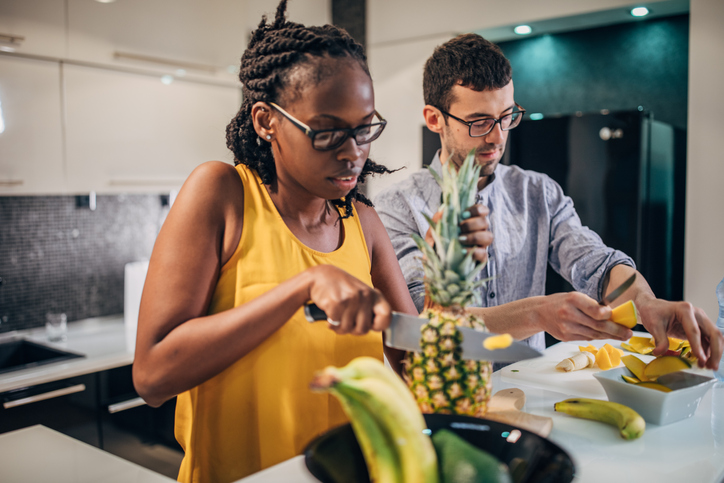
Source: Hirurg / Getty
It’s easy to fall into a bit of a rut with the groceries you buy. You want to get in and out of the store, so you make the usual rounds – you have your path that you take that gets you in and out as quickly as possible. You don’t want to dilly dally in any new sections. You also have your recipes with which you’re comfortable making. You have your taco night, your spaghetti night, your three go-to types of sandwiches and your few ways that you mix up salads like with walnuts or mango. You’re busy. You don’t want to learn about new foods. It took enough time to learn about the ones you already understand. For these reasons and more, you may completely ignore certain types of produce that you regularly see in the store. Maybe you think they look weird or intimidating. You don’t even know what they’re called, or how to pronounce their names. You think that those must just be for extreme foodies and gourmands who explore exotic cuisines – not for you. But many of those funky-looking fruits and vegetables you see and pass up in the produce section of your grocery store are actually pretty easy to integrate into meals, and absolutely packed with nutrients. Often, the weirder looking it is, the better it is for you. Think of some of the items you’ve already come around to, like passionfruit and jicama—that stuff looks bizarre in its raw, untouched form. And yet, you love to put passion fruit in your fruit smoothies and dip jicama in your hummus and ranch dressing. So open your mind a bit more again. Here are weird-looking fruits and veggies you overlook but shouldn’t.
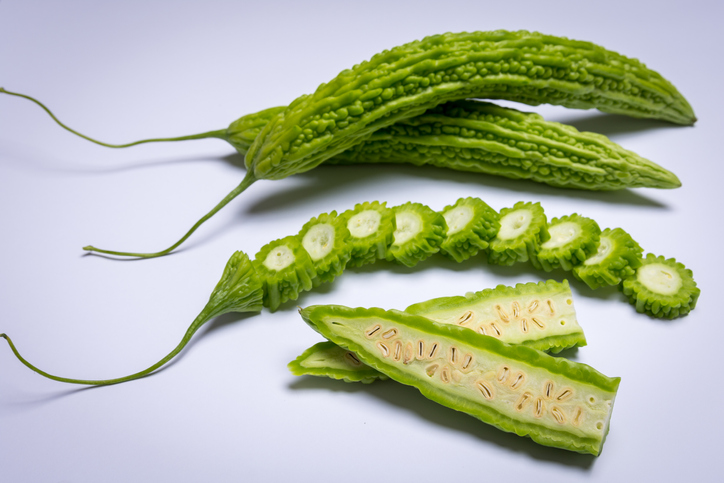
Source: by ale_flamy / Getty
Bitter melon
Also called Bitter gourd, just one of these fruits contains nearly all of your daily recommended intake of vitamin C, and an impressive amount of vitamin A. High in fiber and low in calories, it can also aid in weight loss and blood sugar management. It has a crunchy husk and watery interior and tastes the way its name promises, so many prefer to eat it cooked rather than raw.
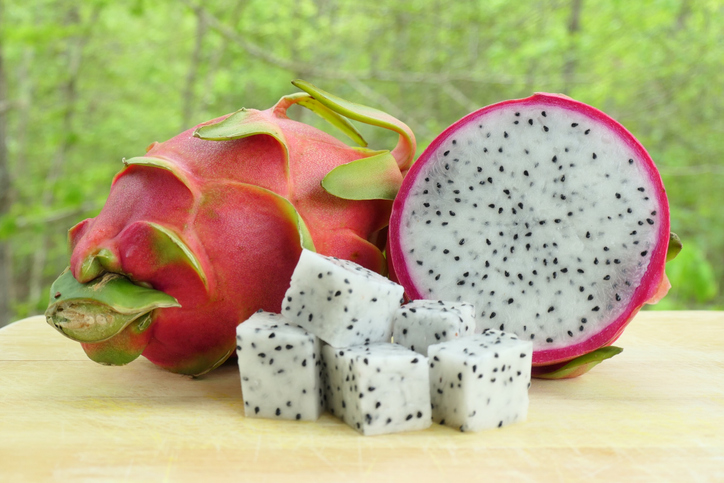
Source: Little Hand Images / Getty
Dragon fruit
This beautiful fruit comes in yellow and fuchsia varieties, both of which are equally sweet and nutritious. They boast tons of fiber, iron, and magnesium. To eat these, just cut them in half, and spoon out the insides, which you’ll eat raw – seeds and all. Their texture is almost like a mixture between pear and kiwi.
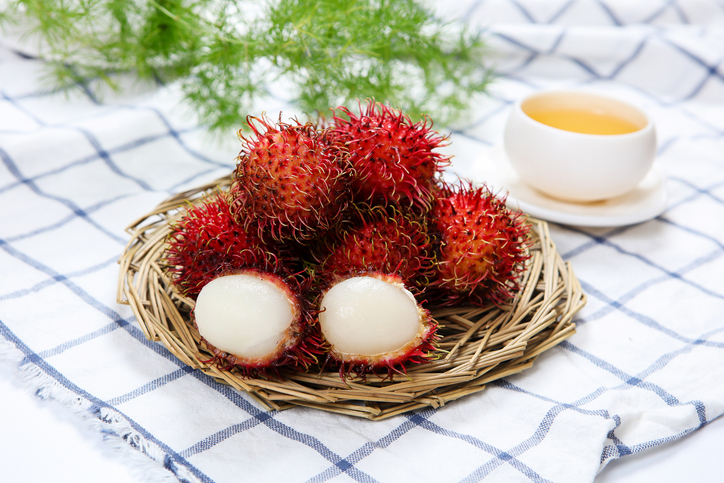
Source: ViewStock / Getty
Rambutan
Don’t let the spiky exterior of this fruit scare you. It’s pretty delicious and often in tropical-themed cocktails. Once peeled, you’ll find a slippery, gelatinous interior wrapped around a pit. Don’t eat the pit, but eat the fleshy fruit, which is an excellent source of iron, and can be good for skin and hair health.
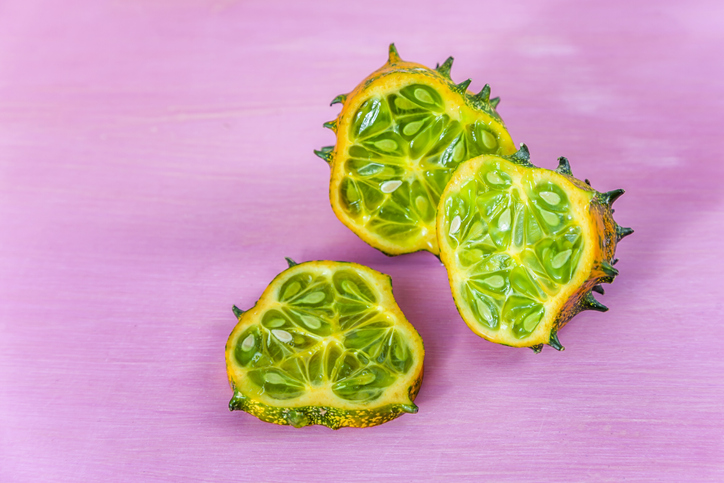
Source: MAIKA 777 / Getty
African horned cucumber
This item is sometimes called the jelly melon or the blowfish fruit, because if its gelatinous interior and spiky exterior. It’s mostly sweet, but not too sweet, and tastes a bit like cucumber and kiwi when moderately ripe, and banana when fully ripe. Just cut these in half and spoon out the insides, seeds and all, as a snack. They have powerful antioxidants, are hydrating, and can even improve mood.
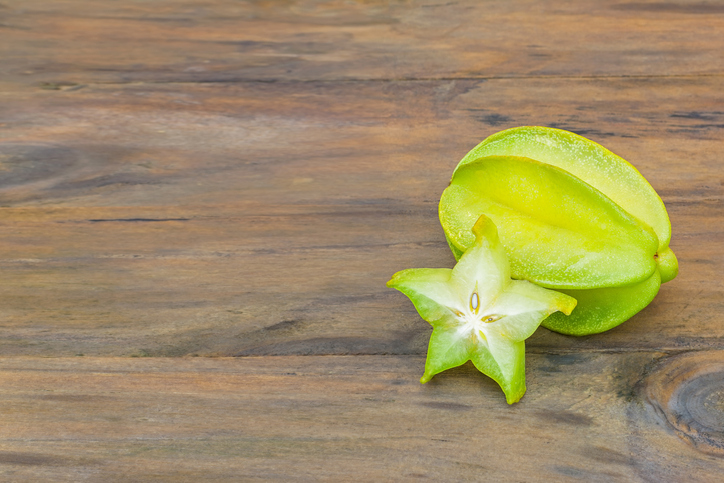
Source: Nattaya Mahaum / EyeEm / Getty
Star fruit
Star fruit is loaded with fiber to keep your digestion moving quickly as well as vitamin A for your eyes, B for your moods, and C for your immunity. It’s also an excellent source of zinc, potassium, and magnesium. It’s sweet and slightly sour and both the skin and flesh are edible, with the interior being nice and juicy.
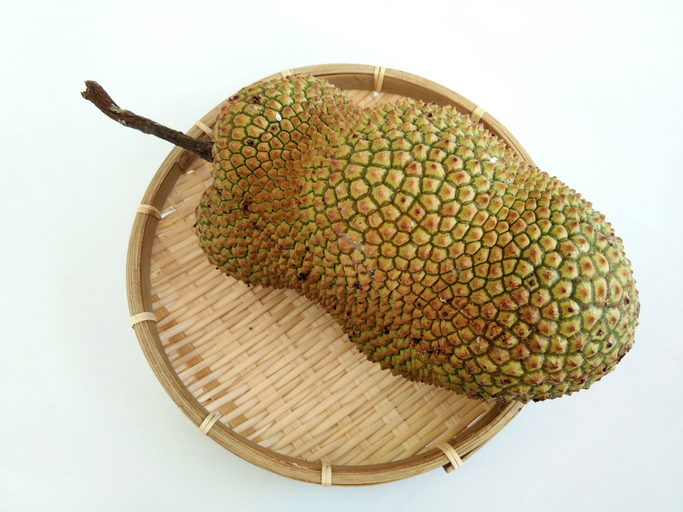
Source: Mohd Bakri Husain / EyeEm / Getty
Jackfruit
Though it has “fruit” in its name, this food is more often used in savory dishes – particularly as a meat substitute in items like pulled pork sandwiches or carnitas tacos, as its stringy texture mimics that meat. You’ll want to eat this stuff cooked, and it’s full of potassium, dietary fiber, and vitamin C.
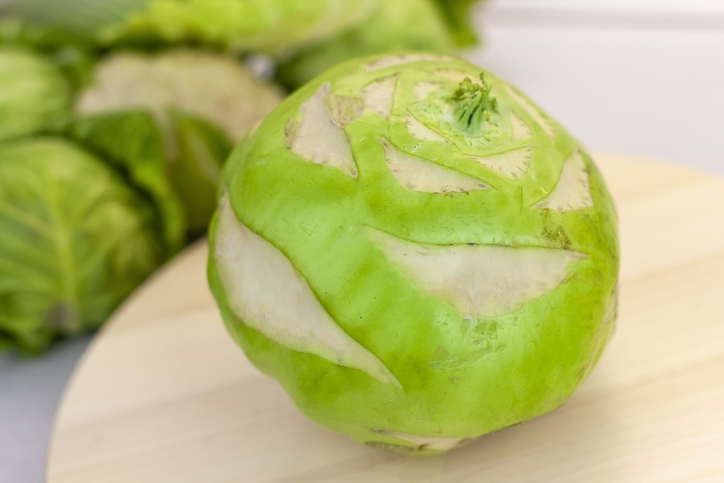
Source: ÐлекÑандра Дымочкина / Getty
Kohlrabi
The name of this vegetable comes from the German word for “cabbage turnip” and that could be because they look like turnips and have a cruciferous texture – much like broccoli stems but a bit sweeter. They come in purple and green varieties can be eaten raw or cooked, and are loaded with antioxidants and vitamin C.
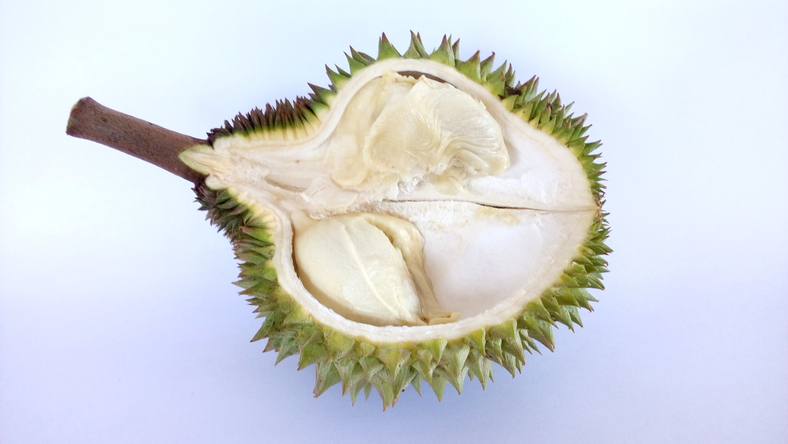
Source: Yatikah Kamarulzaman / EyeEm / Getty
Durian
This is another fruit that may have put you off because of its spiky exterior, but its creamy interior is worth exploring. It’s a very unique flavor combination that’s somehow savory and sweet. Some describe it as tasting like chives and powdered sugar, which sounds odd, but is surprisingly good. It has infection-fighting compounds, lots of thiamine, manganese, and vitamin B6. Its inner flesh can be eaten raw, and is often fried up with rice.
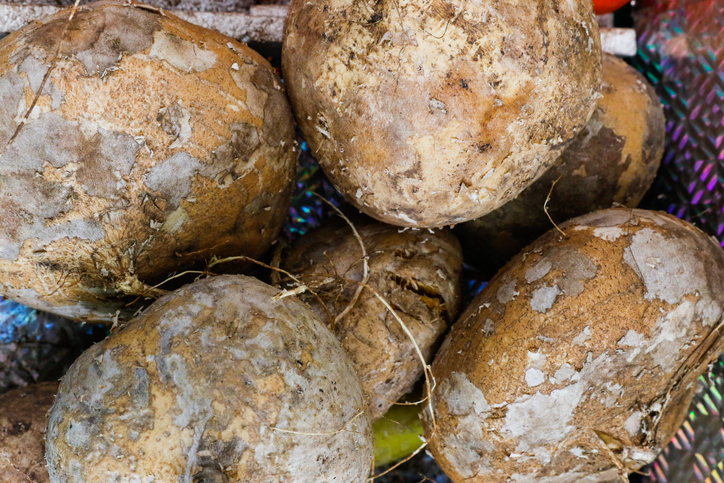
Source: Sergio Mendoza Hochmann / Getty
Jicama
You may not know you’ve passed up jicama. You may just be used to seeing it pre-sliced up in plastic containers, all white and crispy. But you can save money by buying the whole thing, which looks a bit like a stout potato. It can aid with digestion and is easy to add to salads or eat all by itself for a low-calorie snack.
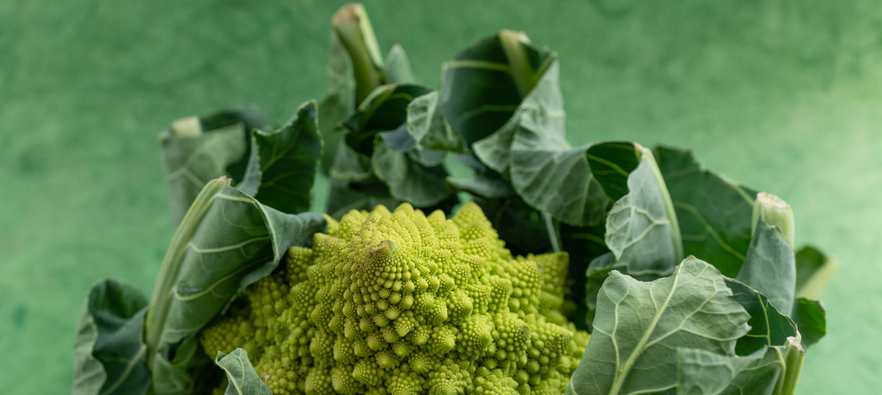
Source: annick vanderschelden photography / Getty
Romanesco
This swirly, spiky, gorgeous green vegetable is from the broccoli and Brussels sprouts family, and you can eat it many of the ways you may eat broccoli – raw with dressing, or cooked up in stir fry, pasta dishes, and the like. It’s an excellent source of carotenoids, folate, zinc, iron, and vitamin C.
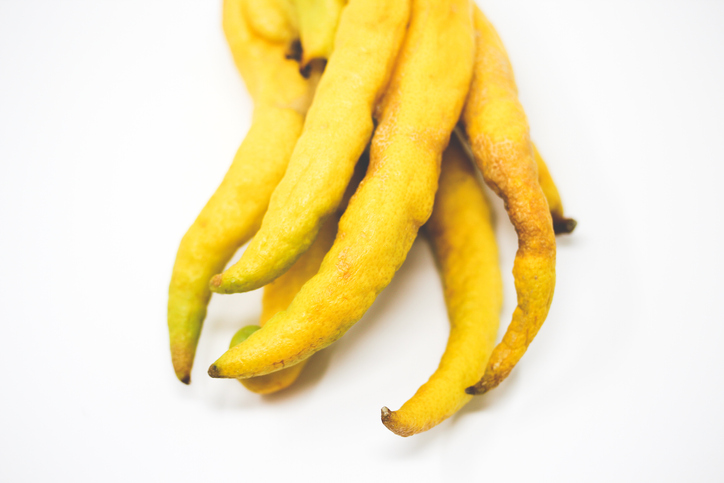
Source: saulgranda / Getty
Buddha’s hand
Buddha’s hand looks very much like a lemon from another planet, with its long tentacles and coarse orange husk. And it is, in fact, from the citron family. It doesn’t have any fruit or pulp and is mainly used for zesting, but can add a wonderful aroma and flavor to dishes. It’s said to have anti-inflammatory properties and has been used for centuries to treat cramps.
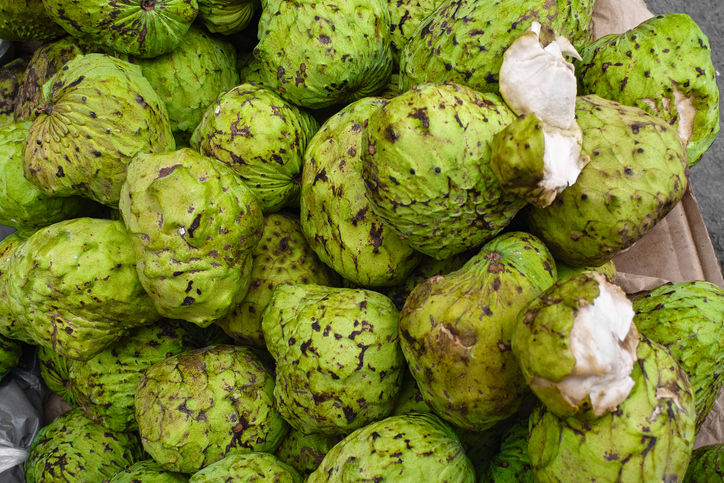
Source: gustavo ramirez / Getty
Cherimoya
This green fruit looks like a mixture between a giant raspberry and an artichoke, and has a tropical flavor akin to pineapple and papaya, or is sometimes compared to peaches and strawberries. To eat this, just remove the peel and skin and eat the flesh as a snack. It’s anti-inflammatory, can promote eye health, and may aid in digestion.
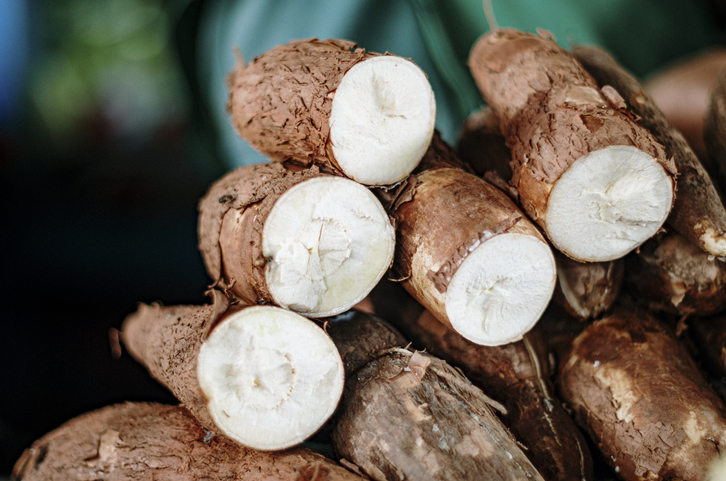
Source: gustavo ramirez / Getty
Cassava
Cassava, otherwise known as Yucca root, is a starchy root vegetable with a nutty flavor that looks like long, rough sweet potatoes with dark brown skin. Its skin contains beta-carotene and lysine, and its flesh may boost immunity and digestion. You can treat it like a potato – steam it, fry it, or boil and mash it.
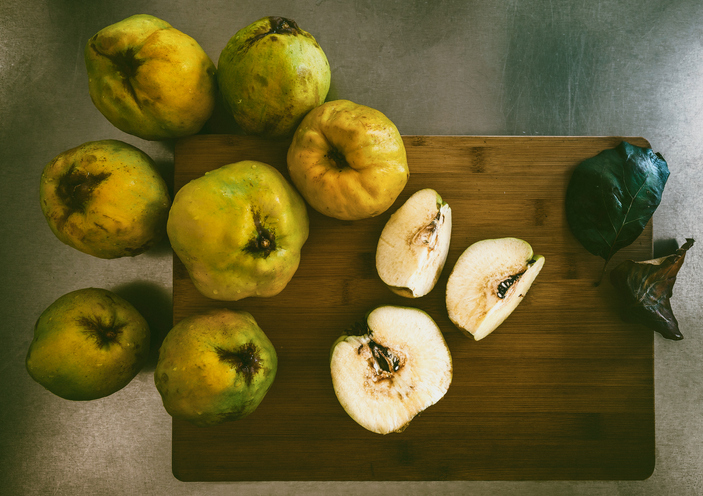
Source: Sandra Gygax / EyeEm / Getty
Quince
Quince is part of the rosaceae family which also contains apples, peaches, plums, and apricots, among other fruits. In fact, it looks like a hybrid between an apple and a pear, and has a slightly crispy and dry consistency these fruits would have if combined. It’s a bit bitter raw, so it’s common to boil it to sweeten it, and put it over yogurt or porridge. It’s a good source of calcium, iron, potassium, copper, and magnesium.
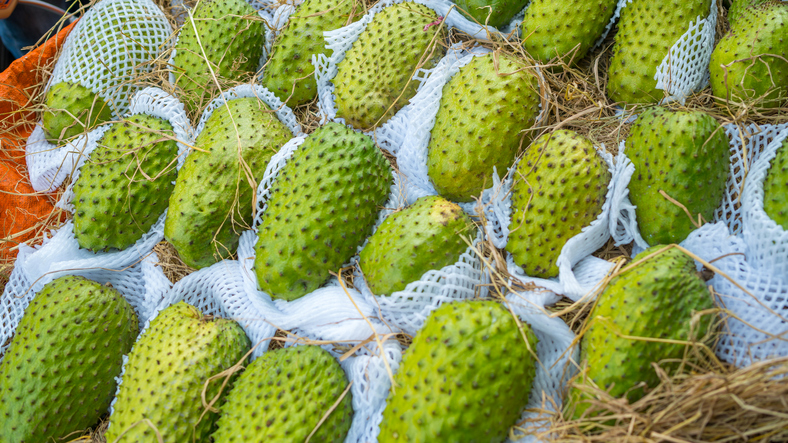
Source: simonlong / Getty
Soursop
Soursop tastes a bit like pineapple and strawberry and can be eaten raw, but the seeds must be removed. It’s often put in smoothies and juices and is loaded with antioxidants, can fight bacteria, and can promote gut health.









